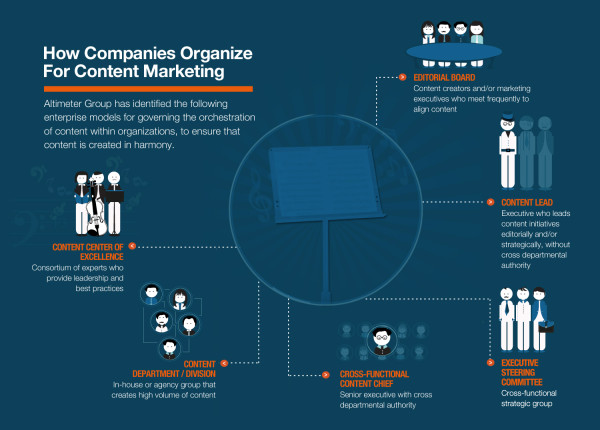
With today’s pressing content demands, every organization with a website, blog and marketing communication documents needs a content marketing strategy. Below are a few questions to consider when developing your own strategy.
- Do you know everyone in your organization who creates and/or publishes content?
- Where are your organization’s creative assets stored and managed? (“My Inbox” and/or “My Desktop” are not correct answers.)
- Do you have an editorial calendar?
- Do you have content specific metrics?
- Do you have a channel strategy?
You’ve heard it a million times by now: every brand is a publisher. But no one said it’s easy to be a publisher. Publishing comes with a real need to “feed the beast.” And, that beast is hungry on pretty much a daily basis. Some brands, such as Red Bull, tweet up to 200 times per day.
Content demands have become near-constant and must increasingly be executed in real-time or near-real-time.
Yet, on the organizational level, content tends to be created and managed in silos. The social team does this, marcomm does that, and PR has its own concerns; meanwhile, community, customer support, creative and advertising teams are each on separate missions. The inevitable result is duplication of efforts, wasted resources, and inconsistent messaging.
At the same time, an ever-increasing number of channels and platforms demand both new skills and increase the need for cross-functional coordination and orchestration.
As an analyst, I’m about a week from publishing new research on how brands are organizing internally to meet the demands of content marketing, the result of dozens of interviews with senior marketing and content executives. My report publishes this month. Below is an advance look at the enterprise models we’ve identified for orchestrating content within organizations to ensure that it’s created in harmony with strategic goals, as well as properly resourced across departments and divisions.
More detailed descriptions of the various groups in the model are provided on MarketingLand, where this originally published.
